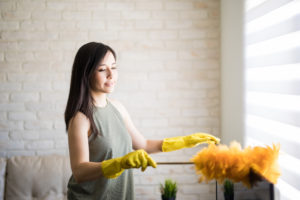We might not have to worry much about urban smog around Broken Arrow, but dust, allergens, and harmful microbes are still common air-quality issues. By using multiple air-cleaning methods, the best whole house air purifier models help protect you from all these pollutants.
Choosing Air-Purification Methods
Some in-duct systems use a prefilter, such as a HEPA filter, to trap dust, pollen, pet dander, and other particles. Those that include an electronic ionizer catch particles too small for filters to handle. Air purifiers do more than just trap particulate pollutants, though. Many include ultraviolet germicidal irradiation (UVGI) lamps that neutralize even the smallest viruses, bacteria, and mold spores. Rather than physically trapping these microbes, the light breaks them down to prevent them from reproducing. Systems that use a gas-phase air filter, such as activated carbon, absorb harmful volatile organic compounds (VOCs) and odors that slip through particulate filters and are among those that are the best whole house air purifier.
Relatively new on the market are photocatalytic oxidation (PCO) systems. These systems neutralize organic air contaminants by shining UV light at a catalyst (usually titanium dioxide), which breaks down organic pollutants in the air passing through. These systems handle both microbes and gaseous contaminants.
The Best Whole House Air Purifier Options
REME HALO In-Duct Air Purifier. Using proprietary Reflective Electro Magnetic Energy technology, this system safely oxidizes and neutralizes mold spores, bacteria, viruses, VOCs, and smoke particles. It was originally designed to correct sick-building syndrome.
D200 Dual Lamp Air Purifier. This PCO system neutralizes viruses, bacteria, and mold spores as well as VOCs. It also includes an activated carbon filter to absorb gaseous pollutants and odor-causing compounds not broken down by the PCO light.
REKO Lighting R2000 Air Purifier. This easy-to-install UVGI light system neutralizes bacteria, viruses, and mold spores but doesn't work against any other type of pollutant. If mold is your main problem, though, it's a good choice.
If you could use some help finding the best whole house air purifier for your needs, contact us at Air Assurance.



